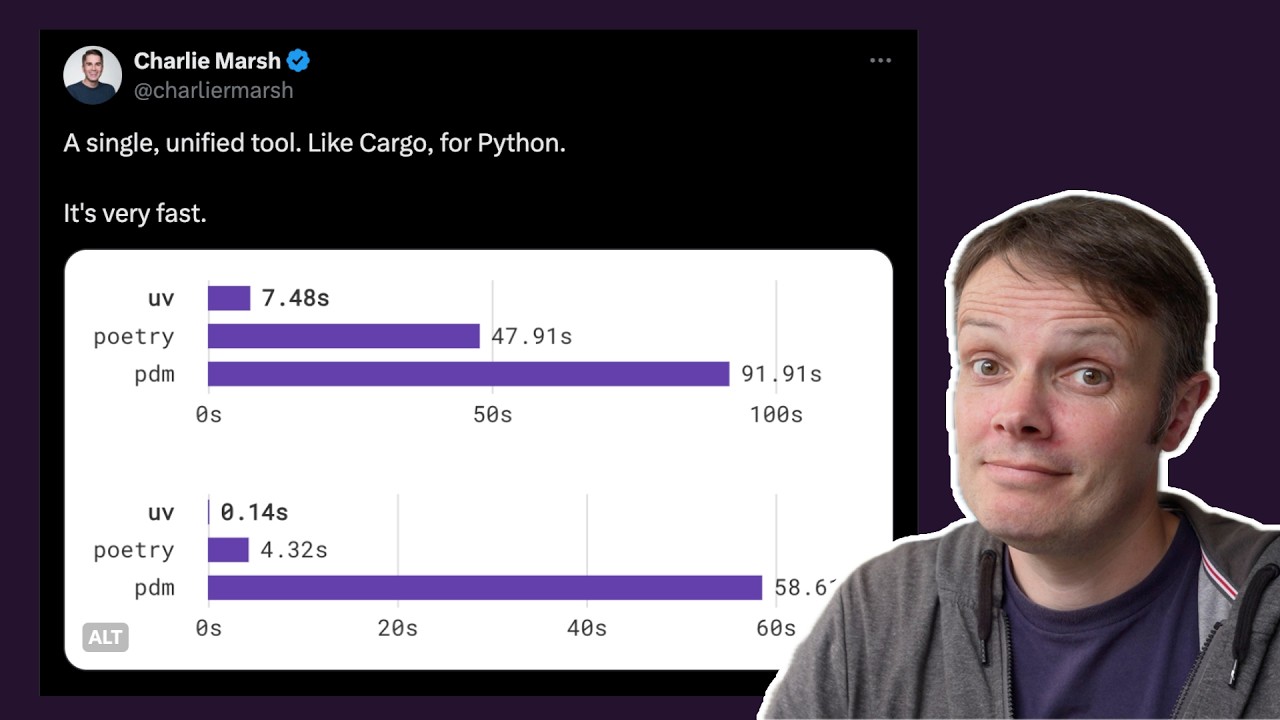The video introduces UV, a new all-in-one tool for Python development that replaces multiple existing tools like pip, pipx, and poetry, showcasing its ease of use and performance improvements from its Rust implementation. The presenter demonstrates UV’s capabilities in managing Python versions, dependencies, and project initialization, highlighting its potential to streamline workflows for developers.
The video introduces UV, a new tool designed to streamline Python development by replacing multiple existing tools such as pip, pipx, pyenv, and poetry. With the recent release of version 0.3.0, which has since been updated to 0.3.5, UV boasts significant performance improvements thanks to its underlying Rust implementation. The presenter demonstrates how UV simplifies various tasks in Python project management, making it a compelling option for developers looking for an all-in-one solution.
To get started with UV, the presenter shows how to install the tool and check the available Python versions. By using the command UV python list, users can see which versions are installed and which are available for installation. The installation process is straightforward, allowing users to quickly set up the latest version of Python. The video also highlights how to run Python scripts using UV, including the ability to define dependencies directly in the command line, which UV handles by creating a virtual environment automatically.
The video further explores project initialization with UV, demonstrating how to create a new project with a pyproject.toml file and a README. The presenter illustrates how to add dependencies, such as Flask, and how UV manages these dependencies within the project’s directory. This approach eliminates the need for additional configuration that other package managers might require, making the process more intuitive for developers. The presenter also discusses how to remove dependencies easily and pin specific Python versions for projects.
Another key feature of UV is its ability to manage tools and their dependencies through the UV tool command. This allows users to install and run tools in isolated environments, similar to how pipx operates. The presenter demonstrates this by installing and running a tool called “posting,” showcasing how UV creates a virtual environment for the tool and caches it for future use. This functionality enhances the overall organization and management of tools within Python projects.
The video concludes with the presenter expressing excitement about UV’s potential impact on the Python development community. With rapid updates and growing adoption, including mentions in the FastAPI documentation, UV is positioned as a promising tool for both new and experienced developers. The presenter emphasizes their intention to use UV for future projects, highlighting its convenience and efficiency in managing Python environments and dependencies.
